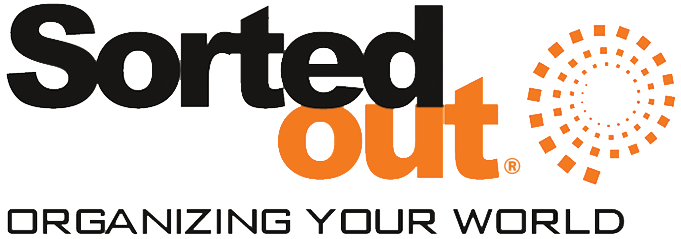
I’m thrilled to report that many of our clients have revealed to us they have a TON of great projects in the works within their businesses. They’re passionate and thrilled about their growth, the future, and the continued possibility for success. But…with the large number of projects-in-progress, they’re starting to feel as overwhelmed as they are excited. The best way to ease anxiety about any project, big or small, is to go into it with a clear plan.
Define with a purpose
The first step of planning a project is to consider the last step. If you want an efficient plan you need to identify what outcome you are ultimately working toward. Having a clear and defined project goal will keep everyone focused and on the same page throughout the process.
Project objectives should detail the specific deliverables you expect to achieve at the end. Then, those objectives should be defined and communicated to EVERYONE involved. Not only should you know what the goal is for your business; you should also ensure each employee knows their individual purpose and goal. (Research shows that employees who are aware of how their individual work is contributing to the company are 2x more motivated.) Motivated employees = a more efficient and successful project!


What are you looking at accomplishing?
Your project goals should be goals that help you measure the success of the project and how it aligns with your objectives. Companies who have set and defined their goals within the work plan can then connect the work of the team directly to the project objectives in real-time. This will make the project implementation run smoothly and efficiently. Your overall plan should provide clear direction for your team to achieve the goals so that you can create workflow that reaches the project objectives.
What is the overall finished result you are desiring? Determining this and then clearly defining and communicating what you expect the final product to be will increase your likelihood of accomplishing all that you intend to by the project’s end.
Brainstorming effectively
A lot of what makes a plan efficient comes down to thorough and effective brainstorming. To be most effective, start by figuring out and setting your project milestones. These don’t require a specific start/end date. However, completing a milestone will help you measure progress by marking significant accomplishments as you go during the project. From there, you can begin outlining project dependencies, or, tasks that you are unable to begin until other tasks are completed. Setting significant milestones and outlining dependencies will help ensure certain work will only begin once it’s ready.
Other key aspects of the project that need to be addressed in brainstorming include team member roles, a budget, and risk management. In your plan, decide which employees will be on your team, and determine the role each person involved will have. You’ll want to clearly define and communicate their tasks to them and consider/plan how many meetings your team will have throughout the project for check-ins. When brainstorming you’ll also need to determine a budget for the project that considers all costs involved (activities, resources needed, equipment that will be used, etc). When thinking about project finances it’s also important to discuss risk management strategies. You’ll want to identify any factors that may alter or affect your project. By assessing all potential risks at the beginning of the planning process, if such a risk or issue were to arise, it allows you to have an effective solution at the ready. Common project risks to consider include:
- unplanned absences from any member of your team
- exceeding your pre-planned budget
- unexpected timing constraints
- potential (cause/effect) delays leading up to your project finalization
Sudden changes during a project are never ideal, but the change will stress you out far less if you’ve already considered and planned for potential modifications with your team.

Organize ideas
Clearly, to effectively plan a project you must consider the details. Simply thinking, “I’ll need update communication,” isn’t enough. You then need to decide how the project updates will be communicated. You have to think about which tool/resource you will use for project communication. You must decide which member of the team will be designated the responsibility of this communication. It’s a lot to think about! After what will likely be many lengthy brainstorming sessions, it’s time to organize your ideas.
Outline the project timeline and schedule. Use your dependency and milestone notes to create a schedule (and ensure all parties involved know the tentative schedule). This schedule detailing each task’s deadline will then serve as the “roadmap” for you and your team throughout the project. Consider demand for specific resources and the availability of each in order to establish an effective schedule. You may also want to break each person’s roles into sub-tasks if they are a key member or share a major role in completing the project. Do so by assigning a start and end date to each subtask. This will keep all team members accountable for their roles and your project on schedule.
If the project or team is large scale, it may be helpful to use a project management application to keep tasks, budgets, deadlines, etc. organized. Products like Asana are great tools to help you track progress, as well as delegate and manage tasks to your team
Action steps to finish
You’ve been hard at work planning, setting goals, budgeting, organizing, and scheduling: now it’s time for it to pay off as you cross the finish line. Be sure you’re monitoring team members regularly to make sure each task is completed by the respected deadline. As you monitor them, you’ll also want to ensure you keep your client or the powers that be informed on the progress. (It’s best to determine with them ahead of time how regularly they want status updates!) As you near completion, assess the project to make sure all tasks are finalized, and all issues (if any) have been resolved. If anyone on the team needed to rent equipment or other tools, make sure those items have been safely & successfully returned. You’ll want to ensure all expectations have been met if not exceeded before project close.
One final step to wrapping up a successful project is often a literal legal “wrap up”; check to see that all required documentation has been submitted to the appropriate persons. This includes any contracts or agreements by other professionals or contractors that may have been involved with the project.

Once you’ve “checked all your boxes” and signed off on completion? It’s time to celebrate your team’s hard work! Most business projects require your full energy and attention for a decent duration of time. Once the project is complete the planning, brainstorming, and organizing is worth it; you should be proud! If you find yourself with a potential project idea, want to ease some of the responsibility involved with a project-in-progress, or simply need help with an initial plan: please reach out to us at info@sortedout.com .
Looking forward to hearing from you,
Tonia
Request a Consultation
There are so many ways that organization can help take back a space that is overwhelming and bring it to functional! We are excited to help start your journey to an organized and productive space.






